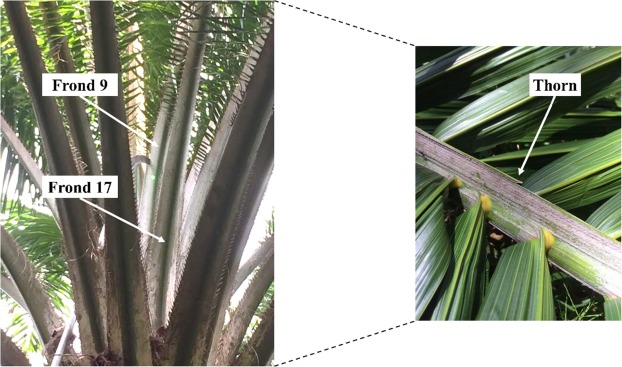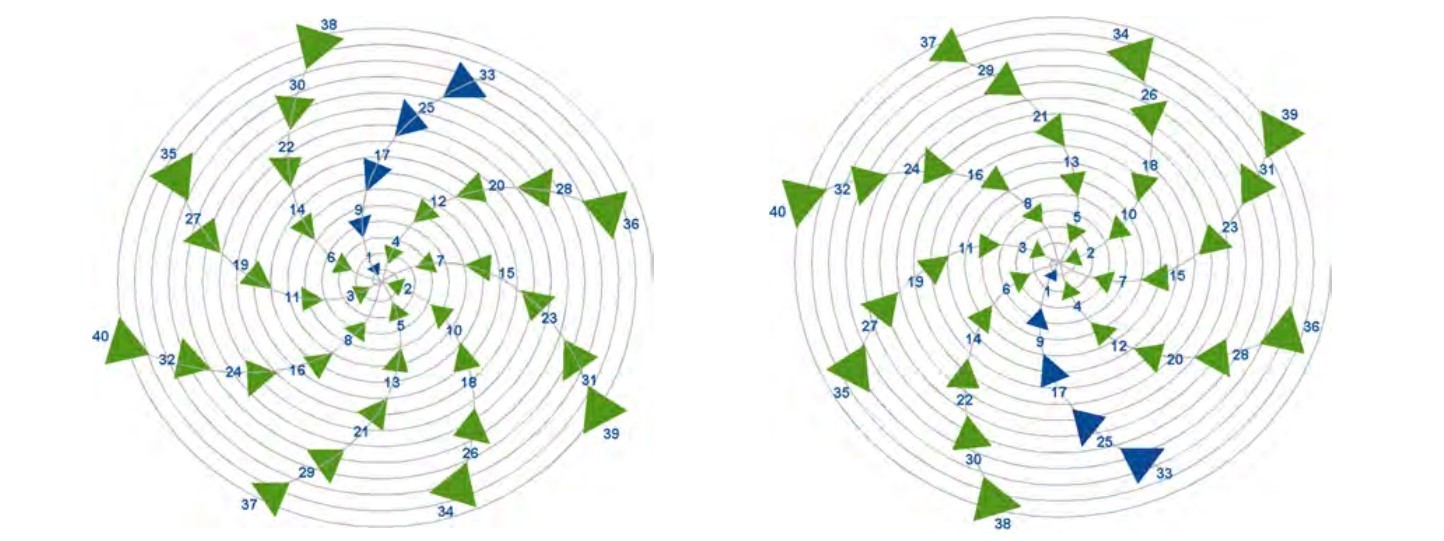LEAF SAMPLING
Objective; To determine the nutritional status of leaflets from frond #9 on immature palms and frond #17 on mature palms to assist with the preparation of annual fertilizer programmes.
Timing; Leaf samples need to collect between 6.30 am and 12.00 noon
Oil Palm Phyllotaxis
Phyllotaxis in left-handed (Left) and right-handed (right) palms. Leaves in on spiral (e.g, Leaf 1,9,17,25,33 and 41) constitute one parastichy
Standards
- The appropriate frond is correctly sampled in each Leaf Sampling Unit (LSU) palm in each field nominated for leaf sampling.
- A composite sample, including leaf material from each Leaf Sampling Unit (LSU) palm is provided for each field nominated for leaf sampling.
- Leaf sampling must follow procedures very carefully to avoid sample contamination.
- Frond #17 is used to allow year-on-year comparisons and to compare results with established critical nutrient levels (Tables A1 and A2).
- Leaf samples are analysed for N, P, K, Mg, Ca, B, Cu, Zn. Other nutrients may be included for palms planted on particular soil types.
- Leaf sampling is carried out once each year but monthly sampling of a few leaf Sampling Unit (LSU) fields is required to determine seasonal fluctuations in leaf nutrient levels.

Notes
- Annual frond analyses should be interpreted in conjunction with soil analysis data, field inspections, and compared to results from previous years. The use of a suitable agronomic database will allow for more efficient data storage and the analysis of trends.
- Frond #9 is used for leaf analysis in young palms, but results may be difficult to interpret. The usual practice is to delay sampling until frond #17 can be used (i.e. at least four years after planting).
- Samples should be taken at least three months after a fertilizer application so that leaf sampling results are not affected by fertilizer applied recently.

